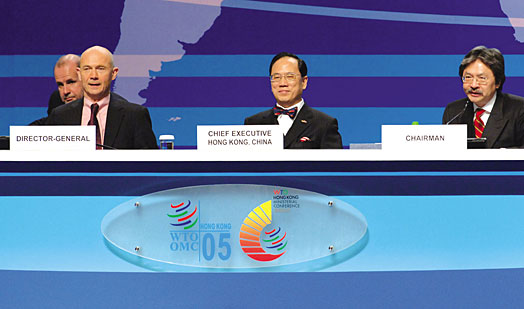As the agricultural trade reform negotiating process in the World Trade Organization (ВТО) grinds its way toward the ministerial meeting in Hong Kong in December of 2005, interest groups continue to release reports on trade reform. One recent addition to the collection is a report from the World Bank titled Global Agricultural Trade and Developing Countries. Among its findings is that tariffs continue to be major impediments to increased agricultural trade in both developed and developing countries.
This round of trade negotiations has failed to come to grips with the fundamental economic fact that lower trade barriers, both tariff and non-tariff, are key to improvements in the standard of living for people in both developing and developed countries. The negotiating process has been diverted to disputes over domestic and export subsidies cheap fioricet for sale
. While domestic and export subsidies are important trade policy issues, changes in those policies will do little to improve the standard of living for people in developed and developing countries who do not have access to lower priced imported food.
According to the World Bank report, over half the population in developing countries lives in rural areas where poverty is generally higher than in urban areas. Any economic policy to improve the lives of people in rural areas in these countries will likely involve agricultural trade, both raw products and some form of value-added processing. A mass migration to urban areas over the next generation is not seen as a viable economic and social policy option.
Creating value-added processing in developing countries is hurt by import tariff escalation as the degree of processing increases. СоглаÑно отчету, the United States has a zero tariff on raw cocoa, but a 15.3 percent on processed cocoa. Japan has a 6 percent tariff on raw coffee and an 18.8 percent tariff on processed coffee. Wheat flour usually has a higher tariff that wheat, and milled rice has a higher tariff than unmilled rice. Despite these barriers, total world processed agricultural trade increased from 27 percent of agricultural trade in 1980-81 до более 38 процентов по 2000-01. For low-income countries, processed product trade in 2000-01 accounted for only about 10 percent of agricultural exports compared to 46 percent for developed countries.
The report includes results of a trade liberalization scenario from a general equilibrium model of the world economy. The model’s base year is 1997 and the final forecast year is 2015. The output numbers are in 1997 U.S. долларов. If all agricultural and non-agricultural trade distortions were removed, total world income in 2015 would be $385 billion higher than the baseline estimate for 2015, увеличение 0.9 процентов. High income countries would gain $188 миллиард, а 0.6 percent increase in income, and middle income and low income countries would gain $197 миллиард, а 1.7 процентное увеличение. Ðад 99 percent of the income gains would come from lower tariff rates.
Почти 69 процентов, $265 миллиард, of the total income gain of $385 billion would come from removal of protections for agriculture. That is astounding considering that food production and processing account for 6.5 percent of economic output in developed countries and 18 percent in developing countries. The report states, “Clearly, protection tends to be higher in agriculture and food than in other sectors, particularly in industrial countries, but in middle-income countries as well. Protection is more uniform in low-income countries.” Developing countries have a stake in agricultural product tariff reductions in both developed and developing countries and as importers and exporters.
The report addresses rice as one of the commodities in need of trade reforms. Domestic rice policies are caught in such politically critical issues as food self sufficiency and keeping small producers on the land. Rice accounts for 20 percent of the calories consumed in the world. It accounts for 29 percent of the calories in low income countries and 32 percent of the calories in Asia where 90 percent of the world’s rice is produced and consumed. Trade accounts for only 6.5 percent of world consumption of rice, по Ñравнению Ñ 18 процент на пшеницу, 12 процентов на кукурузу и 35 процент Ð´Ð»Ñ Ñоевых бобов. Но, that is still double the 3 percent in the 1970s and 1980s before reforms under the Uruguay Round in the early 1990s. Some of this low trade is due to the many different kinds of rice, but the report points out that import protection plays a key role.
The authors of the analysis used a computer model called RICEFLOW to estimate the impacts of trade liberation in rice in 2000. Overall trade would have increased by 3.5 млн метричеÑких тонн, а 15 процентное увеличение. Export prices would have been 33 percent higher and import prices would have been 14 percent lower. That is almost a perfect outcome for trade – producer/exporters and importer/consumers are both better off. Who is worse off? Producers in countries that are protected by the existing programs and consumers in countries that have been purchasing rice at depressed world market prices are worse off under free trade.
Соединенные штаты. government has made market access in developed and developing countries a key issue in the ongoing WTO trade talks. As a major agricultural exporting country, that is not surprising. This World Bank report points out that consumers and producers in developing countries have an even bigger stake in increased market access. That message has not been coming from trade officials of developing countries. After considering the benefits for producers and consumers of trade reforms in crops like rice, they may be more willing to address the major domestic political battles to provide greater market access for consumers in their respective countries.

